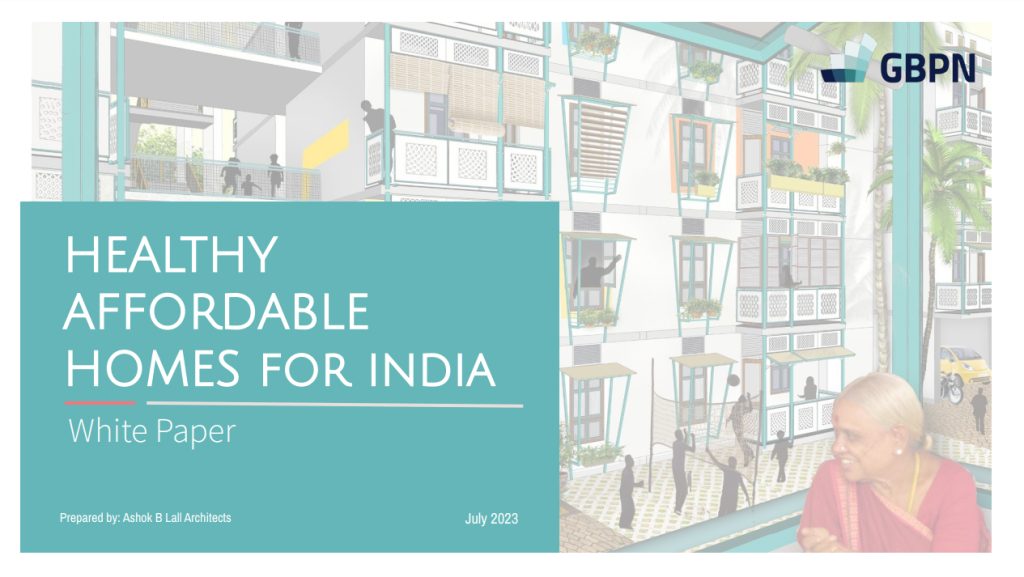Affordable Housing Whitepaper Summary
Introduction
Cities are growing at an unprecedented rate, presenting an incredible opportunity for the development of local economies. However, their residents need good, affordable housing – and this remains a challenge around the world. Well-functioning property markets can act as a financial springboard for enterprises and job creation. An enabling environment for affordable housing can be developed with the right infrastructure, investment, and macroeconomic policies targeted towards social and financial inclusion. The challenge of affordability requires not just short-term fixes but also long-term strategies. Solutions will need to address both the supply side and the demand side of the housing market, and involve public-sector, private-sector, and non-profit stakeholders.

Understanding Affordable Housing
Affordable housing is a critical component of urban development, yet it remains elusive for many city dwellers. The concept of affordability extends beyond the mere ability to purchase or rent a house. It encompasses the broader context of living costs, including transportation, infrastructure, and access to essential services. A house may be affordable in terms of purchase or rental price, but if it is located far from employment opportunities, schools, or healthcare facilities, it cannot truly be considered affordable. The reasons for a lack of affordability vary from city to city, but common factors include housing costs rising faster than incomes, supply not keeping up with demand, scarcity of land, and demographic changes such as population growth, aging, and changes in household composition.
The Challenge of Affordability
The challenge of providing affordable housing is multifaceted. In many cities, housing costs are rising at a rate that outpaces income growth. This imbalance creates a significant barrier for low- and middle-income families, who often struggle to find housing that is both affordable and accessible. The supply of housing is another critical factor. In many urban areas, the supply of new housing units is not keeping up with the growing demand, leading to increased prices and reduced availability. Additionally, the scarcity of land in urban centers further exacerbates the problem. As cities expand, available land becomes more expensive, making it difficult to develop new housing projects. Demographic changes also play a role. Population growth, aging populations, and changes in household composition all impact the demand for housing. For example, an aging population may require more accessible housing options, while an increase in single-person households may drive up demand for smaller units.
The Importance of Infrastructure and Services
Affordable housing is not just about the cost of the house itself. It also involves the broader context of living costs, including transportation, infrastructure, and access to essential services. A house may be affordable in terms of purchase or rental price, but if it is located far from employment opportunities, schools, or healthcare facilities, it cannot truly be considered affordable. The integration of housing with infrastructure and services is crucial for creating truly affordable living environments. For example, well-connected public transportation can reduce commuting costs and improve access to job opportunities. Similarly, the availability of nearby schools, healthcare facilities, and retail services can significantly enhance the quality of life for residents.
Strategies for Addressing the Supply Side
Addressing the supply side of the housing market is essential for creating more affordable housing options. This involves increasing the availability of land for development, streamlining regulatory processes, and encouraging the construction of new housing units. One approach is to repurpose underutilized urban land for housing projects. This can include converting vacant lots, brownfields, and other underused spaces into residential areas. Another strategy is to streamline regulatory processes to reduce the time and cost associated with building new housing. This can involve simplifying zoning laws, expediting permit approvals, and providing incentives for developers to build affordable units. Additionally, encouraging the construction of mixed-use developments can help create more vibrant, walkable neighborhoods that reduce the need for private transportation.
Strategies for Addressing the Demand Side
Addressing the demand side of the housing market is equally important. This involves creating policies and programs that help low- and middle-income families afford housing. One approach is to provide financial assistance through housing subsidies, rent vouchers, and down payment assistance programs. These programs can help bridge the gap between housing costs and household incomes, making housing more accessible. Another strategy is to promote homeownership through affordable mortgage programs and financial education initiatives. By providing access to affordable financing and educating potential buyers about the home-buying process, more families can achieve the dream of homeownership. Additionally, supporting community land trusts and cooperative housing models can help create more affordable housing options that are community-owned and managed.
The Role of Public, Private, and Non-Profit Stakeholders
Creating an enabling environment for affordable housing requires the involvement of public, private, and non-profit stakeholders. The public sector plays a crucial role in setting policies and regulations that promote affordable housing. This includes zoning laws, building codes, and financial incentives that encourage the development of affordable units. The private sector, on the other hand, is responsible for the actual construction and management of housing projects. Developers, builders, and financial institutions all have a role to play in ensuring that housing is both affordable and sustainable. Non-profit organisations can also make significant contributions by advocating for affordable housing policies, providing support services to residents, and developing community-based housing projects. Collaboration between these different stakeholders is essential for creating comprehensive solutions to the affordable housing crisis.
Conclusion
Affordable housing is a critical issue facing cities around the world. It is not just about the cost of purchasing or renting a house, but also about the broader context of living costs, including transportation, infrastructure, and access to essential services. Addressing the challenge of affordability requires a multifaceted approach that includes both short-term fixes and long-term strategies. Solutions must address both the supply and demand sides of the housing market and involve collaboration between public, private, and non-profit stakeholders. By working together, we can create more inclusive, sustainable, and affordable urban environments for all residents.
